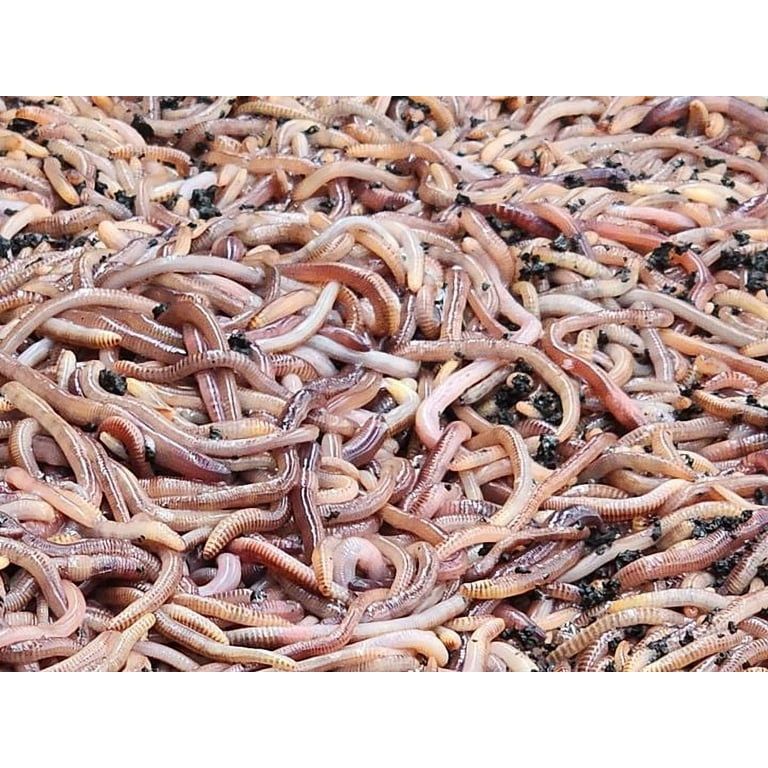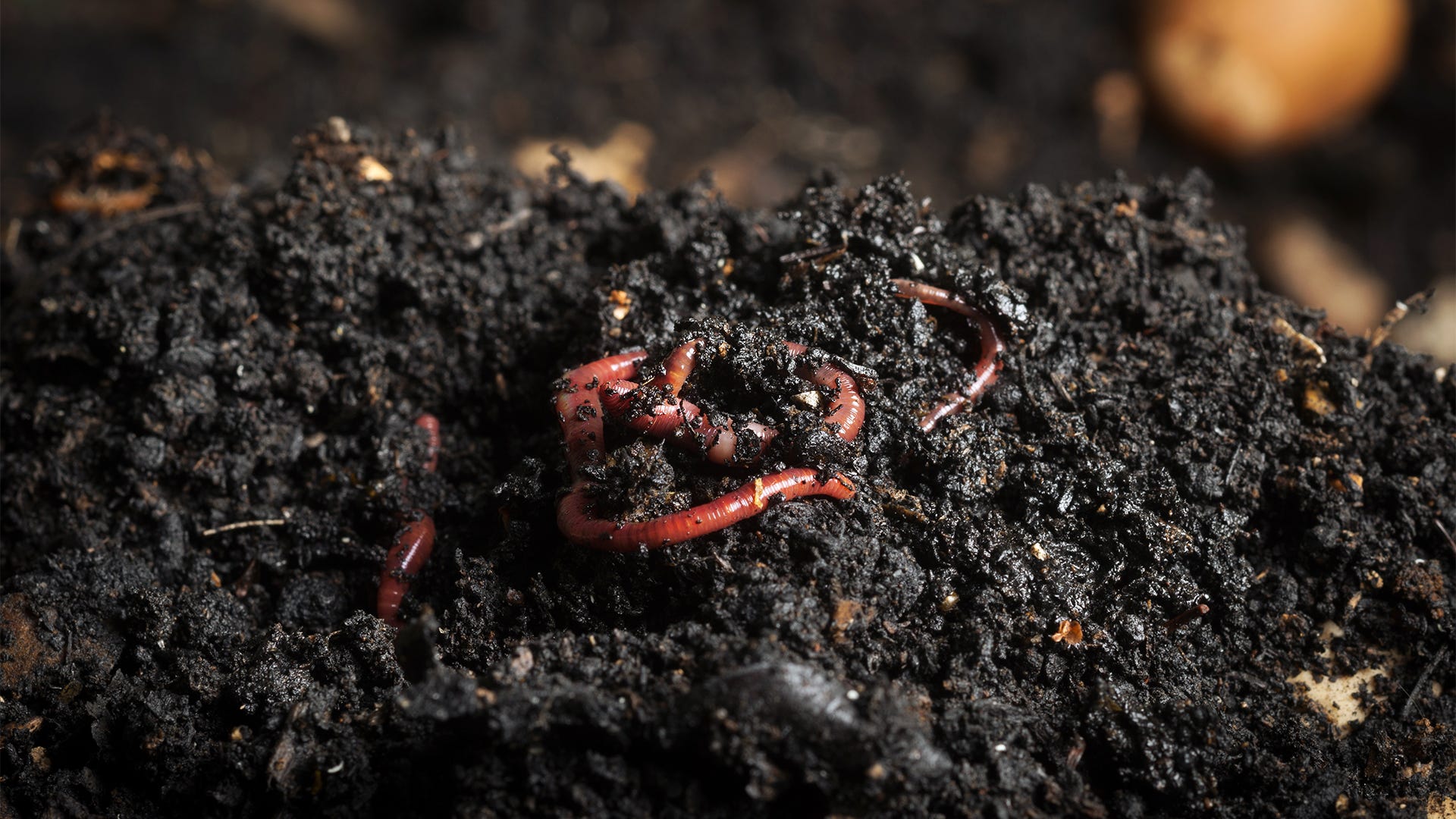Composting red worms: Tips for care a worm bin
Wiki Article
The Duty of Red Wigglers in Lasting Gardening
The combination of red wigglers into lasting gardening practices supplies a compelling approach to boosting dirt health and lowering organic waste. The implications of using red wigglers prolong beyond simple composting; their role in shaping a much more lasting future warrants a deeper expedition of their advantages and sensible applications.Recognizing Red Wigglers
Red wigglers, scientifically called Eisenia fetida, are a species of earthworm renowned for their role in sustainable gardening and composting methods - red wigglers. These worms grow in decomposing raw material, making them particularly reliable in transforming kitchen scraps and backyard waste right into nutrient-rich compost. Unlike conventional earthworms, red wigglers have a higher tolerance for varying moisture degrees and can thrive in settings with bountiful natural product(Raleigh Worm Farms)Classically, red wigglers are smaller than their earthworm counterparts, generally measuring in between 3 to 4 inches in length. They have a reddish-brown coloration and have a segmented body structure that aids in their burrowing and feeding tasks. These microorganisms are hermaphroditic, suggesting each specific possesses both male and women reproductive body organs, which enables for effective population growth under ideal conditions.
The habitat choices of red wigglers include moist, dark atmospheres rich in organic web content, such as garden compost containers or worm farms. Their eco-friendly role extends past composting; they are indispensable in aerating the dirt and facilitating vitamins and mineral cycling, which eventually contributes to much healthier garden communities. red wigglers. Comprehending the biology and actions of red wigglers is important for those seeking to implement reliable vermicomposting in lasting horticulture
Advantages of Vermicomposting
Vermicomposting deals countless benefits that boost lasting horticulture methods and contribute to environmental health and wellness. Among the primary benefits is the improvement of organic waste into nutrient-rich compost, which enhances dirt framework and fertility. The castings generated by red wigglers are packed with advantageous microbes and crucial nutrients, making them an exceptional all-natural plant food.Additionally, vermicomposting dramatically reduces land fill waste. By diverting cooking area scraps and yard waste from garbage dumps, this method not just minimizes methane emissions-- a powerful greenhouse gas-- however also promotes a circular economic situation, where waste is repurposed as a resource.
Another advantage is the enhancement of dirt oygenation and drainage (red wigglers). The burrowing task of red wigglers produces channels in the soil, enabling air and water to permeate even more quickly, thus fostering a healthier root system for plants
Moreover, vermicomposting can be done on a tiny scale, making it obtainable for metropolitan gardeners and those with restricted space. This method urges environmental stewardship and understanding, as individuals end up being much more involved with their waste monitoring techniques. Inevitably, vermicomposting stands for a lasting, effective, and environment-friendly technique to gardening that benefits both plants and the planet.
Just How to Begin Vermicomposting
Beginning your very own vermicomposting system can be a rewarding venture that boosts your lasting gardening techniques. To start, pick a suitable container, such as a plastic container or wood box, with excellent drainage and air flow. The size will depend upon the quantity of cooking area scraps you generate; a bin of 10-14 gallons generally suffices for a household.Next, prepare the bed linens product. Shredded newspaper, cardboard, and coconut coir are outstanding alternatives, offering a comfy environment for the red wigglers. Go for a bed linens depth of concerning 4-6 inches, which ought to be moist but not soggy.
When the bed linens is established, present your worms. Red wigglers (Eisenia fetida) are one of the most ideal for composting. Start with approximately one pound of worms for every single 2-3 pounds of kitchen area scraps weekly.
Begin adding kitchen waste, avoiding meat, dairy, and oily foods, as these can draw in bugs and produce smells. Routinely keep an eye on the bin's wetness levels and temperature level, guaranteeing it remains within the perfect variety for worm task. With these first steps, you'll be well on your method to developing nutrient-rich compost for your garden.
Maintaining a Healthy And Balanced Worm Bin
A growing worm container requires consistent treatment and interest to maintain an ideal environment for the red wigglers. Trick factors to check include wetness levels, temperature, and food supply. Preserving a wetness level similar to a wrung-out sponge is important; excessive water can bring about anaerobic problems, while inadequate can dehydrate the worms.Temperature level is additionally critical, as red wigglers thrive in a range of 55 to 77 levels Fahrenheit. Extreme temperatures can emphasize the worms, potentially causing mortality. Therefore, putting the bin in a climate-controlled area or making use of insulating materials can help regulate temperature level fluctuations.

Last but not least, aeration is essential. Regularly turning the bedding and using a fork or shovel can prevent compaction and advertise air movement, ensuring a healthy and balanced, growing setting for the red wigglers. By sticking to these techniques, gardeners can keep a productive worm bin that supports sustainable gardening initiatives.
Influence On Dirt Health
Enhancing dirt health and wellness through the use of red wigglers is a fundamental aspect of lasting horticulture. These worms, known medically as Eisenia fetida, play a critical function in improving dirt framework and fertility. By taking in organic matter, red wigglers damage down complex products into easier compounds, a procedure called vermicomposting. The end item, worm spreadings, is abundant in vital nutrients, including nitrogen, phosphorus, and potassium, which are vital for plant growth.
(red wiggler fishing worms)Researches have actually shown that soils improved with worm castings exhibit boosted microbial task and boosted fertility, resulting in greater crop returns. By integrating red wigglers into click to find out more gardening techniques, garden enthusiasts not just enhance their soil but also add to a more lasting farming system, emphasizing the interconnectedness of soil wellness and ecological stewardship.

Conclusion
Finally, red wigglers significantly add to lasting gardening with their effective vermicomposting techniques. Their capability to transform organic waste right into nutrient-rich garden compost enhances dirt fertility and supports a diverse microbial ecological community. Furthermore, their burrowing activity improves soil aeration and water retention, profiting plant health. By advertising waste reduction and promoting a round economic situation, red wigglers become essential parts in green gardening initiatives, underscoring their vital duty in ecological sustainability.Report this wiki page